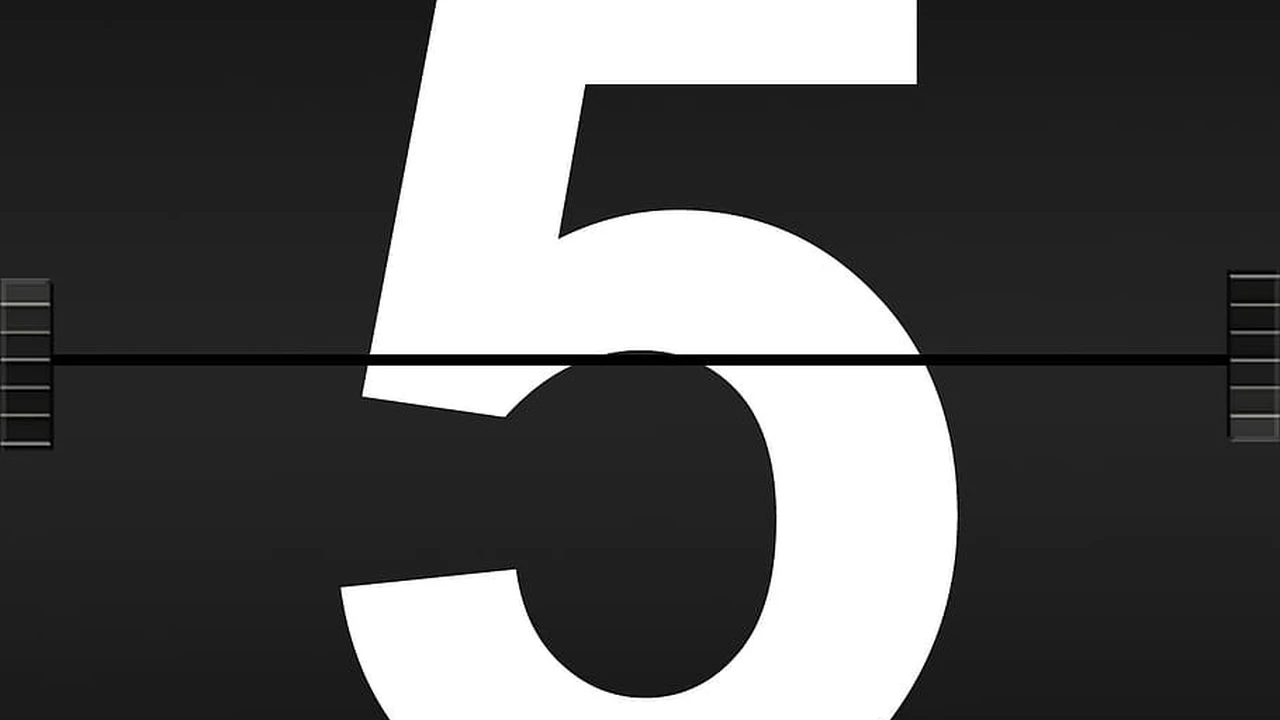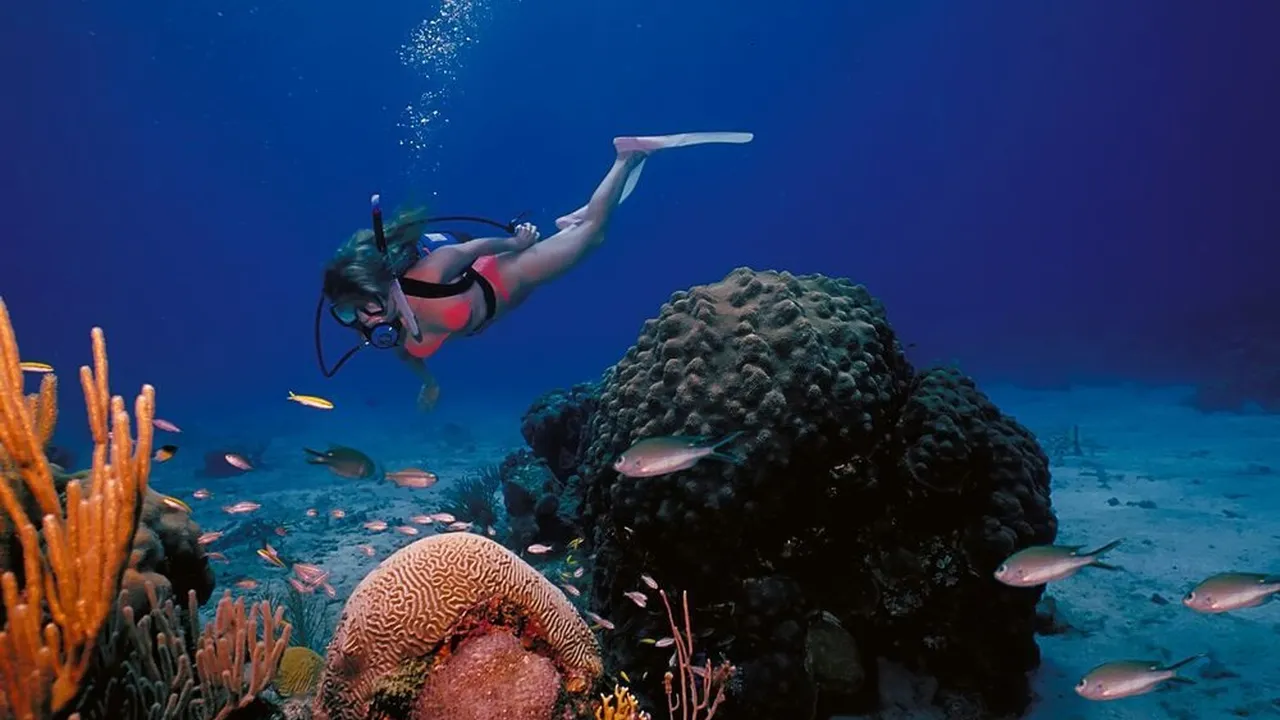Best Scuba Diving Pre Dive Safety Checks
Step-by-step guide to conducting thorough pre-dive safety checks for your gear and buddy.

Best Scuba Diving Pre Dive Safety Checks
Why Pre-Dive Safety Checks are Crucial for Every Scuba Diver
Before you even think about entering the water, a thorough pre-dive safety check is not just a recommendation; it's an absolute necessity. This isn't just about following rules; it's about ensuring your safety, your buddy's safety, and the overall success and enjoyment of your dive. Think of it as your last line of defense against potential equipment malfunctions or human error. Even the most experienced divers can overlook something in the excitement or rush of a dive. A systematic approach to checking your gear and your buddy's can prevent minor inconveniences from escalating into serious emergencies. It builds confidence, reduces anxiety, and allows you to focus on the incredible underwater world rather than worrying about your equipment.The Buddy System Your First Line of Defense in Scuba Diving Safety
The buddy system is fundamental to safe diving. It's not just about having someone to dive with; it's about mutual responsibility and support. Your buddy is your lifeline underwater, and you are theirs. The pre-dive check is a prime example of the buddy system in action. You're not just checking your own gear; you're actively participating in checking your buddy's, and they're doing the same for you. This collaborative approach doubles the vigilance and significantly reduces the chances of an oversight. It also fosters communication and teamwork, which are vital skills for any diving scenario, especially in an emergency.The BWRAF Acronym A Universal Pre-Dive Checklist for Scuba Divers
For many divers, especially those certified through PADI, the BWRAF acronym is ingrained from their very first open water course. It's a simple yet effective mnemonic device that helps ensure all critical aspects of a pre-dive check are covered. Let's break down each letter and what it entails, along with practical tips and common pitfalls to avoid.B is for BCD Buoyancy Compensator Device Check
Your BCD is your primary tool for buoyancy control underwater and for staying afloat on the surface. A proper BCD check is paramount.What to Check:
- Inflation and Deflation: First, orally inflate your BCD fully. Listen for any leaks. It should hold air without significant loss. Then, fully deflate it using both the power inflator and the oral inflator. Ensure both mechanisms work smoothly and quickly.
- Dump Valves: Locate and test all dump valves (shoulder, kidney, and sometimes integrated into the power inflator). Pull each one to ensure it opens and closes properly. These are crucial for rapid deflation in an emergency.
- Hoses and Connections: Inspect the low-pressure inflator hose for any kinks, cracks, or signs of wear. Ensure it's securely connected to both your BCD and your first stage regulator.
- Straps and Buckles: Check all straps (shoulder, waist, chest) for proper adjustment and ensure all buckles are securely fastened and not damaged. A loose BCD can shift underwater, affecting your trim and comfort.
Common Pitfalls: Forgetting to check all dump valves, not fully inflating/deflating to test for leaks, or overlooking worn straps.
W is for Weights Weight System Check for Optimal Buoyancy
Proper weighting is critical for comfortable and safe diving. Too much weight makes you sink uncontrollably; too little makes it hard to descend or stay down.What to Check:
- Weight Quantity: Confirm you have the correct amount of weight for your body, wetsuit thickness, and tank type. This often requires a pre-dive buoyancy check in shallow water, but at least confirm the number of weights.
- Weight System Security: If using an integrated weight system, ensure the weight pockets are securely inserted and locked into the BCD. If using a weight belt, ensure it's properly threaded, the buckle is secure, and it's positioned correctly for easy ditching in an emergency (right-hand release for most divers).
- Quick Release Mechanism: Practice releasing your weights. This is a critical emergency skill. Ensure the mechanism works smoothly and that you can ditch your weights quickly and efficiently.
Common Pitfalls: Not confirming the correct weight amount, failing to secure integrated weights properly, or not practicing the quick release.
A is for Air Air Supply and Regulator Functionality Check
Your air supply is your lifeblood underwater. This is arguably the most critical part of the pre-dive check.What to Check:
- Tank Valve Fully Open: Ensure your tank valve is fully open. Turn it all the way open, then back a quarter turn to prevent it from seizing in the open position.
- Air Pressure Gauge: Check your submersible pressure gauge (SPG) to confirm you have a full tank (typically 200 bar / 3000 psi).
- Primary Regulator Breathing: Take a few deep breaths from your primary second stage regulator. Listen for any unusual sounds, feel for smooth airflow, and ensure there's no free flow.
- Alternate Air Source (Octopus) Breathing: Take a few deep breaths from your alternate air source (octopus). Ensure it's easily accessible, clearly marked, and functioning perfectly. This is for your buddy in an emergency.
- Low Pressure Inflator Connection: Ensure the low-pressure inflator hose is securely connected to your BCD.
- Purge Buttons: Test the purge buttons on both your primary and alternate air sources. They should produce a strong, steady flow of air.
- Buddy's Air Check: Have your buddy check your air, and you check theirs. This involves them breathing from your primary and alternate, while you watch their SPG for any significant drops. A drop of 10-20 bar (150-300 psi) is normal; anything more could indicate a problem.
Common Pitfalls: Not fully opening the tank valve, forgetting to check the alternate air source, or not performing a buddy air check.
R is for Releases All Quick Release Mechanisms Check
This step ensures that all quick-release buckles and mechanisms on your gear are functional and easily accessible.What to Check:
- BCD Releases: Re-check all BCD buckles (shoulder, waist, chest) to ensure they are securely fastened but can be easily released if needed.
- Weight System Release: As mentioned in the 'W' section, practice releasing your weights.
- Tank Band Release: Ensure the tank band buckle is secure and the tank is firmly attached to the BCD. While not a quick release for emergency ditching, it's important for stability.
- Other Releases: If you have any other quick-release items, such as a knife sheath or camera housing, ensure they are secure but can be released.
Common Pitfalls: Not practicing the weight release, or having buckles that are too tight or too loose.
F is for Final Check and Finning Ready for Scuba Diving
This is the final visual and functional check before entering the water.What to Check:
- Mask, Snorkel, Fins: Ensure your mask is clear, your snorkel is attached (if using), and your fins are easily accessible and ready to put on.
- Exposure Suit: Check your wetsuit or drysuit for any tears or open zippers.
- Hoses and Gauges: Ensure all hoses are neatly routed and not dangling. Your SPG and console should be easily visible and accessible.
- Accessories: Confirm all accessories (knife, dive light, slate, camera) are securely attached and not likely to snag on anything.
- Buddy's Gear: Perform a final visual scan of your buddy's entire setup, and have them do the same for you. Look for anything out of place or forgotten.
- Entry Plan: Discuss the entry method with your buddy (giant stride, seated entry, etc.) and confirm the dive plan one last time.
Common Pitfalls: Rushing this final check, forgetting to discuss the entry plan, or not doing a final visual scan of your buddy's gear.
Beyond BWRAF Advanced Pre-Dive Considerations for Scuba Divers
While BWRAF covers the essentials, experienced divers often incorporate additional checks and considerations into their routine.Environmental Factors Assessing Dive Site Conditions
Before you even gear up, assess the environment. Look at the water conditions (currents, waves, visibility), weather, and any potential hazards. Discuss these with your buddy and dive leader. Understanding the environment helps you anticipate challenges and adjust your dive plan accordingly.Personal Readiness Are You Fit to Dive
This is a self-assessment. Are you feeling well? Are you rested? Hydrated? Have you consumed alcohol recently? Are you stressed or anxious? Your physical and mental state significantly impacts your safety underwater. If you're not feeling 100%, it's always better to sit out a dive than to risk an incident.Dive Plan Review Confirming Objectives and Contingencies
Even if you've had a briefing, a quick review of the dive plan with your buddy is crucial. Confirm:- Maximum Depth and Time: Agree on your limits.
- Turn Pressure: What air pressure will you turn around at? What's your reserve?
- No-Decompression Limits: Understand your NDLs for the planned depth and time.
- Emergency Procedures: Review lost buddy procedures, out-of-air scenarios, and ascent procedures.
- Surface Signal: What's your agreed-upon surface signal if you get separated?
- Entry and Exit Points: Confirm where you'll enter and exit the water.
Recommended Products for Enhanced Pre-Dive Safety and Convenience
While the pre-dive check is primarily about procedure, certain products can make the process smoother, more reliable, or add an extra layer of safety. Here are a few categories and specific recommendations.Dive Computers for Real-Time Data and Safety
A dive computer is an indispensable tool for every diver, providing real-time information that's crucial for safe diving. While not part of the physical BWRAF check, ensuring your computer is on, charged, and set correctly is a vital pre-dive step.1. Garmin Descent Mk2i
- Description: A premium, feature-rich dive computer that doubles as a multisport GPS smartwatch. It offers air integration, multiple dive modes (single-gas, multi-gas, gauge, apnea, spearfishing), and advanced navigation features.
- Use Case: Ideal for serious divers who want comprehensive data, air integration, and a versatile smartwatch for daily use and other sports. Its robust build and long battery life make it suitable for extended dive trips.
- Comparison: Compared to simpler dive computers, the Mk2i offers unparalleled connectivity (SubWave sonar for tank pressure monitoring), detailed mapping, and fitness tracking. It's a high-end investment.
- Price: Approximately $1,500 - $1,800 USD.
2. Shearwater Perdix 2
- Description: Renowned for its intuitive interface, large customizable display, and robust build. It's a technical dive computer that's also user-friendly for recreational divers. Offers air integration and multiple gas support.
- Use Case: Perfect for divers who prioritize clear, readable data and reliability. Its large screen is excellent for low visibility or divers with less-than-perfect eyesight. Popular among technical divers but equally valuable for recreational.
- Comparison: Simpler in smartwatch features than the Garmin, but often praised for its dedicated dive functionality and user experience. Its battery is user-replaceable AA, a big plus for remote locations.
- Price: Approximately $1,200 - $1,400 USD.
3. Aqua Lung i300C
- Description: A more entry-level to mid-range dive computer that offers essential features like Bluetooth connectivity for logging dives on a smartphone. It's compact and easy to use.
- Use Case: Great for new divers or those looking for a reliable, straightforward computer without all the bells and whistles of higher-end models. Its Bluetooth feature is convenient for post-dive analysis.
- Comparison: Lacks air integration and advanced technical features of the Garmin or Shearwater, but provides excellent value for its price point and covers all recreational diving needs.
- Price: Approximately $350 - $450 USD.
Dive Slates and Wet Notes for Communication and Planning
Effective communication underwater is vital, especially during pre-dive discussions or if an issue arises. Dive slates and wet notes allow you to write down plans, signals, or observations.1. Underwater Kinetics Remora Dive Slate
- Description: A compact, durable plastic slate that attaches to your BCD. Comes with a pencil and a secure attachment point.
- Use Case: Ideal for quick notes, communicating with your buddy, or jotting down marine life sightings. Its small size makes it unobtrusive.
- Comparison: Simpler than wet notes, but more durable and easier to write on in choppy conditions.
- Price: Approximately $15 - $25 USD.
2. PADI Underwater Wet Notes
- Description: A small, waterproof notebook with a pencil, designed for extensive note-taking underwater.
- Use Case: Perfect for dive instructors, divemasters, or anyone who needs to record more detailed information, such as dive site maps, training notes, or extended observations.
- Comparison: Offers more writing space than a traditional slate, allowing for more comprehensive planning or logging.
- Price: Approximately $20 - $30 USD.
Tank Banger or Shaker for Attention
While not strictly a pre-dive check item, having a reliable way to get your buddy's attention underwater is a safety feature that should be checked for functionality before the dive.1. Scuba Choice Tank Banger
- Description: A simple elastic strap with a hard plastic ball that you can snap against your tank to create a loud noise.
- Use Case: For attracting your buddy's attention, signaling a problem, or pointing out marine life.
- Comparison: More effective than tapping your tank with a knife, and generally louder than a shaker.
- Price: Approximately $10 - $15 USD.
2. XS Scuba Shaker Stick
- Description: A small, sealed tube containing metal beads that create a rattling sound when shaken.
- Use Case: Similar to a tank banger, for attracting attention. Often preferred by underwater photographers as it's less intrusive.
- Comparison: Quieter than a tank banger, but still effective in close proximity.
- Price: Approximately $8 - $12 USD.
Dive Alert Air Horn for Surface Signaling
An essential safety device for surface signaling, especially if you get separated from the boat or your group.1. Dive Alert Plus V2
- Description: An air horn that connects to your BCD's low-pressure inflator hose. It uses air from your tank to create an extremely loud sound on the surface.
- Use Case: For attracting attention from boats or shore personnel if you surface far from your intended location.
- Comparison: Far more effective and louder than a whistle, especially in windy or choppy conditions. A must-have for open water diving.
- Price: Approximately $60 - $80 USD.
The Importance of Repetition and Muscle Memory in Scuba Diving Safety
The pre-dive safety check should become second nature. The more you practice it, the more ingrained it becomes, turning into muscle memory. This is crucial because in a stressful situation, you want these checks to be automatic, allowing you to focus on the immediate problem. Regular practice, even when you're not diving, can help reinforce these habits. Imagine going through the BWRAF steps mentally or physically with your gear before every dive, even if it's just a quick pool session. This consistent repetition builds confidence and competence.When to Re-Check Your Scuba Diving Gear
It's not just about the initial pre-dive check. There are situations where you should consider re-checking your gear or at least parts of it:- After a Long Surface Interval: If there's a significant break between dives (e.g., lunch break), a quick re-check of your air and BCD is a good idea.
- After Changing Tanks: Always perform a full air check (tank valve, SPG, primary and alternate regulators) after changing tanks.
- If You Feel Something is Off: Trust your gut. If something doesn't feel right with your gear, take the time to re-check it before entering the water.
- If Your Buddy Changes: If you switch buddies, perform a full buddy check with your new partner.
- After Any Gear Adjustment: If you've adjusted your BCD straps, weight system, or anything else, give it a quick once-over.
:max_bytes(150000):strip_icc()/277019-baked-pork-chops-with-cream-of-mushroom-soup-DDMFS-beauty-4x3-BG-7505-5762b731cf30447d9cbbbbbf387beafa.jpg)






